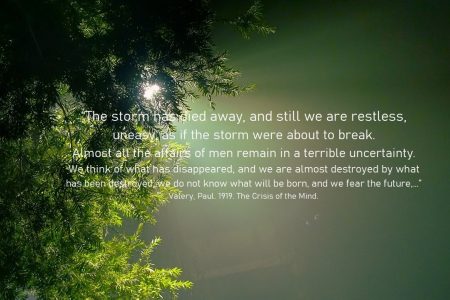Pandemics: Survival of the ‘most anxious’?
When people in movies shake hands or crowd into elevators, do you think 'No! Keep back!'? I do. And it’s not just me. Apparently the Corona-induced fear of human contact is already wired in our brains. In this pandemic, will it be a case of survival of the most anxious?
Anxieties
Clinical psychologists often deal with people who are anxious. This can be anxiety about specific animals (like arachnophobia), but also fear of contamination and germs, or even of going outside (agoraphobia). If these fears are persistent, irrational, and disruptive to daily life, they may develop into an anxiety disorder. As researchers in the field of Psychology, one of the questions we ask ourselves is “Where do these anxiety disorders come from?"
Heritability
Research has shown that anxiety is partly heritable. We inherit genes from our parents that can make us more fear-prone. Our brain is actually hardwired to recognize dangerous situations and respond with fear: the well-known “fight or flight” instinct. In some people this fear system is more sensitive than in others.
An evolutionary point of view
Thinking of anxiety disorders from an evolutionary point of view, we can see it in two ways. Given that such disorders often interfere with social functioning, they may negatively impact reproduction success, so the genes responsible for these disorders could be expected to become extinct over time. On the other hand, fearful behavior may enhance survival in dangerous situations, so erring on the side of caution may have been very adaptive for our ancestors. This may have been how anxiety genes came to be transmitted to subsequent generations. Pandemics, in that way, may give us some more insight into why certain anxiety disorders still exist.
Rational anxiety
Now that we are in the middle of a global pandemic, in which we are warned daily to keep our distance, stay away from busy places, and wash our hands as often as we can, the fear of germs and meeting others is no longer deemed irrational, but necessary. For some people this behavior appears to require significant effort or sacrifice (consider anti-mask protestors, or the illegal parties that are constantly in the news), while for others it comes much more naturally. Do the more anxious among us have an inherent advantage in this situation? While more outgoing and sensation-seeking individuals keep behaving in ways that will increase infection rates, the more withdrawn and neurotic individuals reduce their chances of catching and spreading the Corona virus by responding with appropriately fearful behaviors.
Survival
Luckily the chance of dying of COVID-19 is relatively low, so the extroverts among us won’t immediately become extinct. But in the case of the Spanish flu about a hundred years ago, withdrawn versus outgoing behavior may have strongly impacted who survived and who did not. Possibly, the Spanish flu may have favored the survival of more anxious people!
Learning and unlearning
However, anxiety is not only transmitted via genes, but also by social learning. Kids will mimic parental fears, and peers will mimic each other. We know that fears are easily learned (‘encoded’), but at the same time very hard to unlearn (a process we call ‘extinction’). Even after fears become extinct, if people are once again confronted with previously feared outcomes, the original fears and behaviors can easily return (a process called ‘reinstatement’). The current ‘fearful’ regulations may therefore have an enduring impact on our behavior, like keeping distance, non-stop hand washing, and fear of handshakes (not to mention the traditional Dutch “three-kisses” greeting).
Exposure
So far, the best therapy for overcoming anxiety is exposure: repeated confrontation with feared situations, and an accompanying reduction in stress associated with these exposures. So in a way, we should all keep watching movies where people shake hands, step into full elevators, and hug without distance, as a reminder of our behavior in ‘normal times’. However, as the pandemic continues, it is likely that the on-screen behavior of our TV and movie stars will be impacted by social distancing rules, and behaviors previously classified as anxious may become the new norm...





